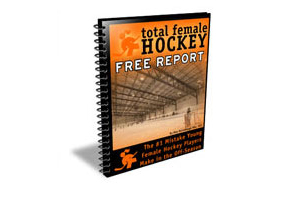4 More Skills Girls Hockey Players Must Improve On
I took pages of notes when I was watching women’s college hockey games between the University of Wisconsin and the University of Minnesota-Duluth last week. And while I was thinking about drills to run at this week’s practices with my team, I looked back at those notes and realized that I had 4 more key points (to add to last week’s 7) that I wanted to share with you after watching these two elite teams play and execute at such a high level.
So I created a new list of “4 More Skills Player Must Improve On” based on my observations at these games:
1. Forwards Look To Feed The Defense:
This skill was one that I saw both teams use extremely effectively in these games and made me realize that it is not used nearly enough at younger ages. Moving the puck back to the points while in the offensive zone forces the defensive team to adjust their positioning which quite often opens up holes in their defensive coverage. You don’t want to blindly throw the puck back to your defenseman, but you are probably not using them as much as you could to create opportunities on offense. One extra point on this – once you make the pass to the point, make sure you move to get open so that you are in position for either a pass or a rebound.
2. Defense Picking Up Bodies In Front Of The Net:
This is something that has been an even greater challenge for players ever since obstruction and interference were removed from minor hockey. We used to be able to push players out of the way before the puck arrived – but now that’s a penalty, This means that forwards are easily gaining inside position on the defenseman and getting opportunities to score in tight. To make matters worse, defensemen get caught staring at the puck in these battles for position in front of the net, instead of finding their player. This is one of the key skills that scouts and coaches at the
next level are looking for from their players and it is one that you will need to learn to do properly (without taking a penalty) in order to compete at that level.
3. Find Open Ice To Support Your Teammates:
I believe this is the biggest difference between bantam age (13-14 year olds) and midget age players (15+). While there can be a significant difference in overall skill levels between these two age group, at the higher levels, most bantams and midgets have the same relative skill level. Most players at both age groups are very good when they have the puck – but the midget players do a much better job of getting open and supporting their teammates than the bantam players do. This can certainly be taught, but it also comes with years of experience. As the game continues to become faster and even more physical, players cannot rely on skill alone. They need to develop their hockey sense and understand where the space is on the ice and how to use it effectively.
4. Every Pass Is Hard, Fast & Made With Authority:
This is something that you don’t really recognize as a player until you start playing with and against players who pass as hard as you normally shoot. This happened to me the first time I played out with the national team girls out in Calgary. I spent the first few weeks getting used to the fact that I thought my stick was going to break every time I received a pass. As the game gets faster, the passes get harder and faster too. The earlier you start passing with authority, the sooner you help yourself and your teammates get used to the speed and strength of passing you will encounter in the future.
Keep Working Hard and Dreaming BIG.
Your friend and coach,
~ Coach Kim

